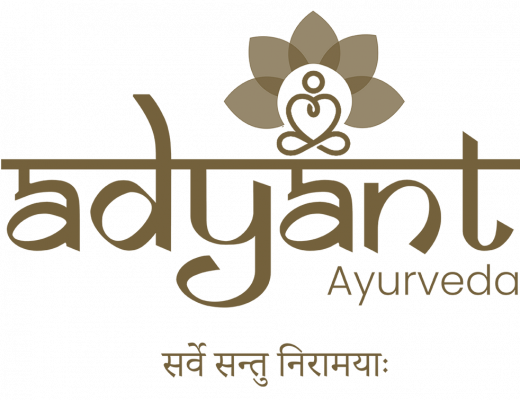
Table of Contents
ToggleAyurvedic Treatment for Varicose Vein
Often, people complain of tired or fatigued limbs, many times making their mobility a discomfort, also noticing bluish or reddish enlarged areas over limbs. If these are bothering you, it can be due to varicose veins. Here will discuss Ayurvedic treatment for Varicose vein.
So what are varicose veins?
A condition that mostly affects the leg area, wherein the veins of the legs become swollen twisted, or enlarged and are visible prominently as bluish masses are termed varicose veins.
Most of the time the condition goes unnoticed or it may not be of any concern as they do not exhibit any symptoms and they are not in much trouble. Sometimes it may be of concern based on cosmetic reasons. But when the condition reaches a stage wherein there is an association of pain, throbbing, discomfort, heaviness of limbs, or stiffness, it needs to be appropriately addressed.
What are the causes of varicose veins?
When it is increased or excessive pressure brought about over the abdomen and hips it can result in varicosity.
Standing for long hours can lead to pressure on the veins.
Other causative factors may be obesity, pregnancy, aging factor, menopause or fatigue. Lack of nutrients in the diet can reduce the elasticity of veins leading to varicose.
What happens in varicose veins?
Generally, veins help in the circulation of blood back to the heart. They have valves to allow the blood to flow and they are closed to prevent the blood from flowing back. But when the elasticity of the veins is affected their functionality gets affected making the blood pool up in the vein leading to varicosity.
What are the symptoms of varicose veins?
Veins that appear prominently bulged, blue or red lined, heaviness or tiredness in limbs, sometimes itching around the area, sore or pain in legs, sometimes associated with discoloration.
Best Ayurvedic Medicines for Varicose Veins
While Ayurveda offers various herbal
medicines for managing varicose veins, it’s crucial to consult with a qualified
Ayurvedic practitioner before starting any treatment. The appropriate medicines
may vary based on individual constitution and specific symptoms. Here are some
Ayurvedic medicines commonly used for varicose veins:
1) Triphala Guggulu: Combines the
detoxifying properties of Triphala with the anti-inflammatory effects of
Guggulu. It may help in reducing inflammation and improving blood circulation.
2) Yogaraja
Guggulu: Contains a combination of herbs like Guggulu, Triphala, and
others. It is believed to support joint health and circulation.
3) Kaishora
Guggulu: Known for its detoxifying properties, Kaishora Guggulu is believed
to help purify the blood and support overall vascular health.
4) Gotu
Kola (Centella asiatica) Capsules: Gotu Kola is often used in Ayurveda to
support healthy circulation. It may help strengthen the veins and improve blood
flow.
5) Horse
Chestnut (Aesculus hippocastanum) Extract: Horse Chestnut is known for its
potential to strengthen veins and reduce inflammation. It is available in
various forms, including capsules and extracts.
6) Varunadi
Vati: Contains herbs like Varuna, Punarnava, and Gokshura. It is believed
to have diuretic and anti-inflammatory properties, potentially supporting
vascular health.
7) Bilvadi
Leha: Made from Bael (Bilva) fruit, this Ayurvedic formulation may help in
promoting healthy blood circulation.
8) Arjuna
Capsules: Arjuna (Terminalia arjuna) is known for its cardiovascular
benefits. It may help strengthen the heart and improve circulation.
What is the ayurveda perspective? / Ayurvedic treatment for Varicose vein
Ayurveda advocates that the sharira or the human body comprises tridoshas, saptadhatu, trimala along with detailed mention of the organ systems also. Among saptadhatus, rakta is the second dhatu and the circulation of rakta dhatu occurs in sira or blood vessels. As it involves enlarged veins it mentioned as Siraja or Sira granthi in ayurveda. It is caused due to the aggravated pitta dosha in the sira. It is associated with vitiated Kapha and Vata dosha at the area of enlargement, hence an imbalance in tridoshas.
The lakshanas or symptoms are gratitha sira or enlarged veins, sada or numbness, ayasa or fatigue, toda or pricking or continuous ache in the limbs and krishnakaraka sira or bluish purple discoloration of the skin due to veins.
How does ayurveda approach siraja granthi?
The involvement of pitta, vata and sira are predominant here.
1) Medications that help to improve circulation as well as to resolve the vitiated doshas are advised to help improve circulation, reduce the venous pressure and increase flexibility.
2) External therapies like Abhyanga done in a reverse way along with Udwarthanam or powder massages facilitate the reduction in venous pressure.
3) Ayurveda also advises bandages or Vesthana to strengthen the veins.
4) A unique line of treatment in ayurveda specific for varicose is Raktamokshana.
Raktamokshana or bloodletting therapy can be done using Leech popularly known as Jaloukavacharana. The areas wherein the enlargement of veins are prominent are selected and thoroughly cleaned and properly cleansed leeches are applied for a specific period of time. A few sessions of leech therapy will help to reduce the pressure and improve the condition considerably.
Raktamokshana done by Siravyadha is one among the Shastra karma. A procedure wherein a vein is punctured for therapeutic purposes. It helps to relieve vitiated doshas, improve circulation and reduce pressure.
Raktamokshana benefits in a quick and effective way giving excellent benefits in varicose veins.
-
- Diet plays a major role in ayurveda and emphasis is laid on modifications in diet.
-
- Lifestyle changes are advised to improve quality of life,
-
- Exercises specific to the condition are also implemented.
Enjoy the benefits of Ayurveda for a healthy life.
Book your appointment today at Adyant Ayurveda with the Best Ayurvedic doctor in Bangalore.


